Ww1 & Ww2 British Distinguished Service Order Medal Group Brigadier General
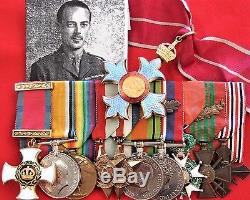
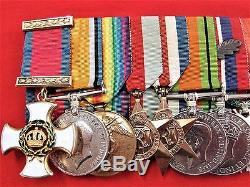
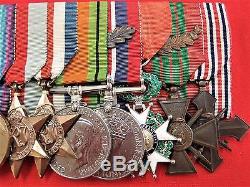
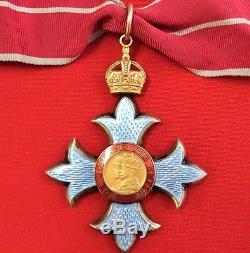
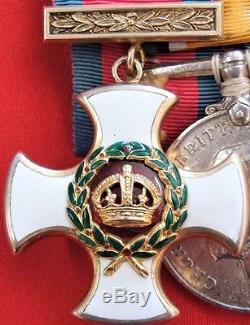
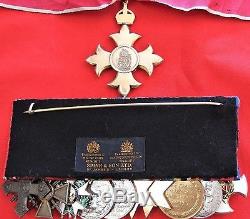
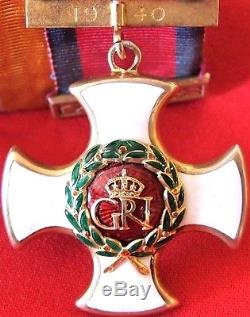
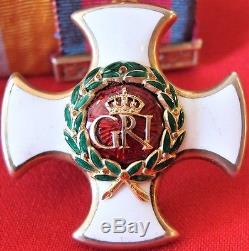
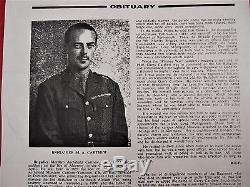
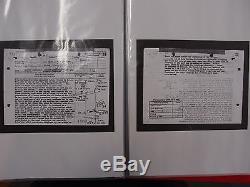
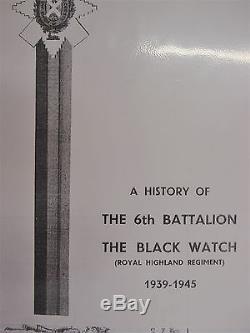
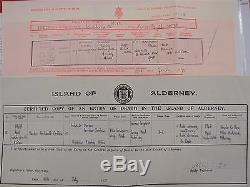

Evacuation from Dunkirk 1940 D. Group of eleven awarded to Brigadier M. Carthew-Yorstoun, Black Watch, who commanded the 6th Battalion during the withdrawal from Dunkirk, and was twice sunk in the evacuation, being severely wounded on the second occasion and only surviving through the timely intervention of an elderly Able Seaman. The Most Excellent Order of the British Empire. (Military) Commanders 2nd type neck badge, silver-gilt and enamel.
Silver-gilt and enamel, reverse of suspension bar officially dated 1940, with integral top riband bar. British War and Victory Medals. Star; France and Germany Star; Defence and War Medals. Chevaliers breast badge, silver, gilt, and enamel; France. 939-45, bronze, mounted court style as worn. Traces of lacquer, minor white enamel damage to points of arms of the Croix de Guerre. London Gazette 24 January 1946: The recommendation states: Brigadier Carthew-Yorstoun commanded General Headquarters troops in British Liberation Army from July to the end of August 1944, and was then appointed Commander of the British Army Staff in Paris. The first of these two appointments he held with distinction and was promoted Brigadier in late August 1944 to fill the second. When he first went to Paris general conditions in the capital were chaotic and the first priority task which was allotted to him was the preparation of a leave centre for all ranks of the British Liberation Army. He set about this with tremendous energy. Complications and difficulties of all sorts were overcome one by one. He had a perfect grasp of his problem and together with the team he had about him, which he infected with his own zeal and devotion to duty, he produced in a remarkably short space of time an organisation which made the British leave centre in Paris a credit to the Army and a source of great satisfaction to all ranks who went there. The Press was unstinting in its eulogies of all the arrangements. Brigadier Carthew-Yorstoun wrote a personal address of welcome to all ranks, the wording of which was so well chosen that it undoubtedly contributed to the good discipline and soldierly behaviour which was always displayed by the troops on leave and which became the admiration of our allies. In January 1945 Brigadier Carthew-Yorstoun was appointed to command 101 Beach Sub Area at Caen when there was still a great deal of activity in the port and neighbouring depots. With a small staff he performed his functions admirably. Later, on transfer to Holland, his Beach Sub Area was upgraded and became 21 L of C Sub Area. Throughout the whole campaign his services have been outstanding. London Gazette 22 October 1940. The recommendation states: Throughout the operation 13 May to 1 June 1940, this officer has led his Battalion with outstanding courage, coolness and resolution. In particular on 26 May, he organised and carried through a successful counter-attack and tenaciously held on to the ground so gained. He extricated his Battalion skilfully when the order to withdraw was given and brought his Battalion through many difficulties and on his own initiative to rejoin his Brigade in time to take part on 29 to 31 May in the defence of an important sector near Nieuport. When his Battalion was finally ordered to withdraw, it was still holding its original front line despite repeated enemy attacks upon it.London Gazette 25 April 1941. Morden Archibald Carthew-Yorstoun was born at Gate Fulford, York, on 13 September 1897, the only son of Lieutenant-Colonel A. Who commanded the 2nd Battalion Black Watch during the Boer War and was seriously wounded at Paardeberg. Educated at Winchester College and the Royal Military College, Sandhurst, where he won the Sword of Honour, he was commissioned into the Royal Highlanders on 7 April 1916, and served during the Great War as Aide-de-Camp to the Commanding Officer of the 1st Division from February 1917 until 9 June 1919, being appointed a Member of the Order of the British Empire on the cessation of hostilities. Following the war, he served as Aide-de-Camp to the Governor of Bengal; on attachment to the Egyptian Army, 1922 until 1925; and with the Sudan Defence Force, 1925 until 1932, serving as Comptroller to Governor General of Sudan in 1926 and Brigade Major of the British Troops in Sudan 1931-32.
Returning to the 2nd Battalion, Black Watch in 1933 as Garrison Adjutant, Portsmouth and Brigade Major to the Commander of the 9th Infantry Brigade Brigadier B. Montgomery, he was promoted Major on 1 August 1938, and appointed temporary Lieutenant-Colonel commanding the 6th Battalion Black Watch in March 1940. Going to France with his Battalion, he was evacuated from Dunkirk on 1 June 1940, and in the course of his battalions evacuation the destroyer he was borne on was sunk by bombing. After transferring to a second destroyer, he was again sunk, this time suffering severe wounds- he only survived because an elderly Able Seaman, whom he was never able to trace, put a life jacket on him at the last moment.
(Account from the recipients Obituary in The Red Hackle refers). For his gallantry at Dunkirk he was Created a Companion of the Distinguished Service Order, and also Mentioned in Despatches. His wound was too serious for him to take a major part thereafter in the War, but having made a partial recovery, he was appointed Colonel on Staff Headquarters, Royal Armoured Corps in 1941, and appointed to the command of the 176 Infantry Brigade (59th Division) as temporary Brigadier in April 1942, a post he held until D-Day.
Following the Liberation of Paris he served as Head of the British Army Staff in Paris, 1944, and was promoted substantial Lieutenant-Colonel on 2 January 1945. His final appointment was as Chief Liaison Officer, British Army of the Rhine and British Zone of Germany, a post he held from 1946 until his retirement, with the honorary rank of Brigadier, on 24 January 1949. He died on 24 April 1968. Please view our guide on spotting fake militaria. We list militaria and coins weekly.
We provide quality mounted medals, badges and historical research. We can mount your miniature or full size medals, ribbon bars or supply replacement ribbons or badges.
We can also conduct military research on your behalf and value cherished objects with a current market or insured value. 2/135 Russell St, Morley, WA.
We run two specialist military auctions per year, details of which can be found on our website. Items are accurately described & photographed. Additional costs for this standard service will be added for this service based on publicly available Australia Post rates. Please note, these items are located and will be posted from Australia. We appreciate fair feedback from you once you receive the item.
We aim to give you, the customer our best customer service. The item "WW1 & WW2 BRITISH DISTINGUISHED SERVICE ORDER MEDAL GROUP BRIGADIER GENERAL" is in sale since Thursday, May 04, 2017. This item is in the category "Collectables\Militaria\1914 - 1918 (WWI)".
The seller is "jb_military_antiques_14" and is located in 2/135 Russell St, Morley, Perth, WA. This item can be shipped worldwide.- Authenticity: Original
- Country: Australia
- Campaign: World War II
- Era: 1940s
- Product Type: Medals

